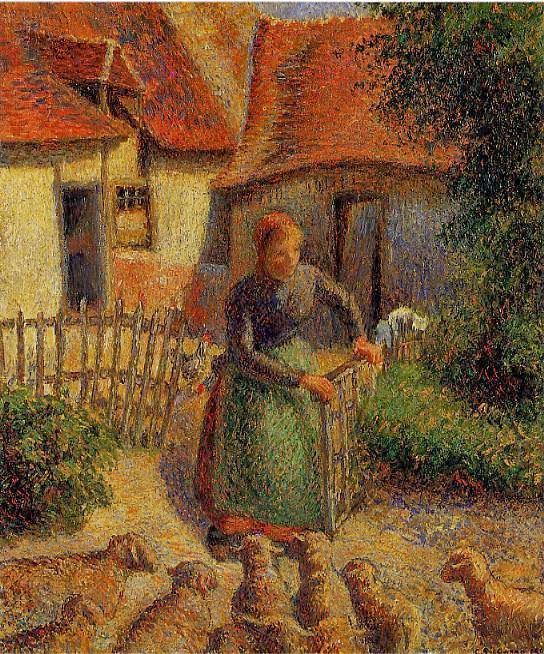In December it was announced that the University of Oklahoma and Leone Meyer had reached a tentative settlement in the litigation over Meyer’s claims to La Begère by Camille Pissarro, a painting stolen from her father Raoul during the Vichy regime. Yesterday the final agreement was made public. As reported by Graham Bowley at the New York Times, title to the painting will reportedly be confirmed as Meyer’s, and the work will be displayed on a rotating basis in France (where Meyer lives) and the Fred Jones, Jr. Museum of Art (where it has been) until such time as Meyer donates it to a French museum (either during life or in her will). It is a remarkable development in a case that the Oklahoma defendants defended vigorously, and a credit to the participants and lawyers involved on both sides that they were able to bridge the gap and reach an agreement.

Meyer had alleged that the painting was stolen from her father Raoul in France by the Vichy regime in cooperation with the occupying Nazi forces. After the war, Raoul located the painting in the possession of Christoph Bernoulli in Switzerland, but lost a court case there in 1953 in which Bernoulli argued that he had bought the painting in good faith. Meyer sued the Oklahoma defendants in New York in 2013, claiming that she is the rightful owner of the painting. (Meyer also sued my client the David Findlay, Jr. Gallery and others alleging that the painting had been sold at the David Findlay Galleries in 1956 to Aaron and Clara Weitzenhofer, the couple who eventually bequeathed it to the Fred Jones, Jr. Museum. My client and the other New York defendants were dismissed from the case by agreement or as defunct entities).
The New York court dismissed the case for lack of personal jurisdiction, but then revived it to the extent to transfer it to the Western District of Oklahoma. In retrospect, what seemed to be the lowest moment in the case was the turning point, because public attention in Oklahoma began to gather in a way that it had not when the case was pending in New York.
As reported in the Times, Meyer’s attorney Pierre Ciric said “Léone Meyer has agreed that, rather than getting the painting back for her own living room, to continue the public display of the painting for the public.” For his part, David L. Boren, the University of Oklahoma president, said: “The University is pleased that a constructive agreement has been reached. The rotating display of the work meets the University’s long-stated goal to ensure the painting remains available to Oklahomans and that it continues to be available for educational purposes.”
A settlement is just that, not an admission or concession of what the result would have been. Indeed, the defendants had a powerful legal argument that the Swiss judgment extinguished any claim to title by the Meyer family, but thankfully in many ways it never has to come to that now. Bernoulli is a notorious name that should be a red flag in any provenance, but the finality of a Swiss judgment that found him to be a good faith purchaser is something that Meyer would have had to contend with. And the Oklahoma defendants reportedly extracted an acknowledgement that the Weitzenhoffers had purchased the painting in good faith as part of the agreement, honoring the university’s benefactors.
As is often the case, a creative solution was able to break the impasse. All involved deserve credit for being flexible enough to craft a solution.



